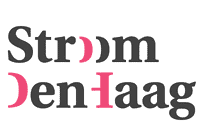Rob Birza, Tantratrijn, 2007 foto: Sander Foederer, courtesy Stroom Den Haag
Rob Birza, 'Tantratrijn', 2007
Location: Center of The Hague: Spui - Grote Marktstraat - Kalvermarkt
From the moment he created a furor in the Netherlands in the 1980s, Rob Birza (1962) has quoted art history, as it was then called. 'For me, modern art begins with the Egyptians,' Birza lets us know. 'And not only withPicabia, Picasso or any of those other modern classics.' He has also always been interested in non-Western cultures. During his many travels, particularly to India, he encounters other visual languages that he takes home with him. In his paintings, sculptures and installations, he combines images from art history with everyday imagery (comics, advertising) as well as those of non-Western cultures. The resulting artwork shows the viewer different perspectives that are all equally valuable. Indirectly it makes you aware of your own - limited - view.
Birza also drew from different worlds for his pedestal sculpture “Tantrine. First, there are the multi-armed tantric images from Hinduism and Buddhism to which the first part of the title refers. The 'trijn' refers to the puppets Jan Klaasen and Katrijn: super Dutch, in other words. Birza also incorporated images from art history into this sculpture. For example, the main figure of his pedestal sculpture, through his posture and the hole in his body, is reminiscent of Zadkine's The Ruined City (1951). The sculpture this Russian/French sculptor made for Rotterdam in memory of the May 1940 bombing. Indirectly, the hole in the body refers to the holes in the statues of the famous English sculptor Henry Moore.
The gold of the brass and the bright colors of automotive paint used to paint the puppets recall Tibetan statues. The result is a colorful and festive sculpture in which imagery from diverse cultures are fused into one. As a matter of course, your eye glides along from one style to another.



